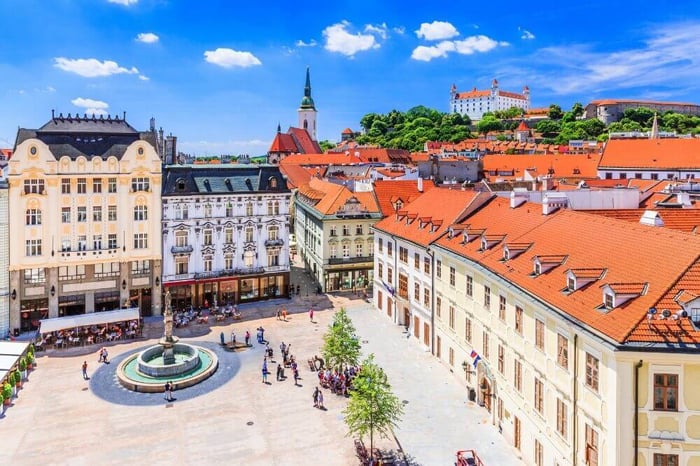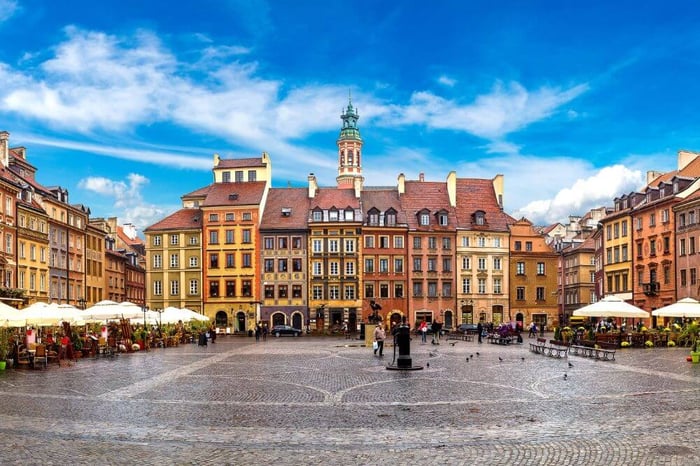
A Guide to Medicine Universities in Romania
Romania is the sixth most populous country in the EU. Situated on the shores of the Black Sea, and bordering Ukraine, Bulgaria, Hungary, and Serbia, it boasts both sea and ski resorts as well as hundreds of years of cultural history. There are nine medical schools in Romania that offer courses in English and French, providing lots of choice for potential applicants. Between them, they accept 1,100 medical students onto their English courses per year. Studying medicine in Romania is financially economic, with low tuition fees of around 5,000 Euros per academic year. In this blog post, we introduce you to some of the medical schools in Romania that international students can apply to.

Romanian medical universities all offer 6-year programmes, each of which features three pre-clinical years and three clinical/internship years. Graduate and undergraduate applicants apply to the same course in each of the Romanian medical schools, with some offering an advantage to students who have completed a degree in a health-related field.The nine universities at which you can study are:
- Carol Davila University of Medicine and Pharmacy, Bucharest. The faculty of medicine is the oldest in Romania. This school has a wealth of history which has translated into an excellent teaching programme. Bucharest is the capital of Romania. The course offers a one-year preparatory course in the Romanian language so students can adapt to life in a foreign country.
- Craiova University in Medicine and Pharmacy. Craiova has a rich history but is a very financial city and thus there are also many modern aspects, with large shopping centres and a bubbly nightlife. Rent is very cheap, so your living expenses will be low, while tuition fees are 5000 euros per year, significantly cheaper than a Western University.
- Titu Maiorescu University of Bucharest. As a slightly newer faculty of medicine, there is a great focus on teaching medical students the skills and knowledge to be a doctor in the present day. Students are encouraged to participate in research, which is an invaluable opportunity. Medical students can also undertake part of their degree at sister universities in Paris, Vienna and more. Students complete clinical placement in more than 20 hospitals, and the degree programme offers early exposure, with the aim of introducing students to the idea of a multidisciplinary team. Tuition fees are slightly higher, at 7000 euros per academic year.
- Vasile Goldis Western University of Arad. Arad is another financial city which is one of the fastest growing cities in Romania. The facilities are very modern, and the course structure is three years pre-clinical and three years clinical. Tuition fees are 5000 euros per academic year.
- Ovidus University Constanta. It is a modern medical school in a city of 300,000 people. It has a great history with fantastic architecture and a library with 500,000 publications, so you'd never be short of material! Again, the course is split into three years pre-clinical and three years clinical, where students undergo rotations in surgery and general medicine. Tuition fees are 5000 euros per academic year.
- Iulio Hatieganu University of Medicine and Pharmacy. This university, of Cluj Napoca, offers courses in medicine, dentistry and veterinary medicine, and has no entrance exam. Cluj Napoca is a large city in Romania so there will be plenty to do in the times when you are not busy with your studies. Tuition fees are 6000 euros per academic year.
- Oradea Medical University. With 14,000 students, Oradea is home to one of the largest universities in Romania. The faculty of medicine was founded in 1991, and runs a 6 year english medical course which again is split into 3 years pre-clinical and 3 years clinical. Tuition fees are 5000 euros per academic year.
- Grigore T. Popa University of Medicine of Iasi. Established in 1879, it is one of the oldest universities in Romania. It is set in a beautiful location with valleys surrounding the city. There are 50,000 students, so the city has really developed to accommodate these, with many places to work and socialise. Tuition fees are 5000 euros per year.
- Victor Babes University of Medicine and Pharmacy Timisoara. Founded in 1944, it was initially part of the Western University (Vasile Goldis) but has since become independent and now has a faculty of over 700 staff. It is in the running to be the 2021 European Capital of Culture. Again, the course has three years pre-clinical covering scientific knowledge and basic medicine - anatomy, histology, physiology and biochemistry. Then, there are three clinical years, and this medical school focuses specifically on surgery and preventative medicine. Tuition fees are 5000 euros per academic year.
Courses
All of the Romanian medical schools offer 6-year programmes in Medicine, and all favour a traditional approach with three years of pre-clinical study and three years of clinical placements. There is also the opportunity to take early clinical placements over the summer holidays in several of the schools. Romanian medical schools ensure all graduates have a good grounding in the biomedical sciences through lectures and small group sessions, as well as providing clinical experience in the later years.
All nine of the universities provide teaching in the Romanian language in the early years, which is vital for the students as they progress towards the clinical years where patient interactions become more frequent.
Academic requirements
Each university has different academic requirements and selection procedures. As a general rule, they tend to have either no minimum requirements or relatively low requirements (e.g. BB at Vasile Goldis), but then reward students with higher grades during the selection process. This makes it hard to predict what grades will be required to be successful in each admission cycle.
Admissions exams
All but three of the Romanian medical schools require candidates to sit an exam prior to admission. These are unique to each university. All are conducted in English. Three of the schools (Carol Davila, Oradea, and Craiova) have exams to test applicants English ability only, while two (Victor Babes and Ovidius) assess candidates on the English abilities as well as their scientific knowledge. Only one, Vasile Goldis, assesses candidates purely on their scientific knowledge.
Medical student's opinions
Several students say that the input and engagement from the faculty is one of the best parts of studying in Romania. They also celebrate the diversity of the student bodies, providing exposure to a range of cultures that they may not otherwise have encountered. Students also report a strong affection for the cities in which the universities exist, and feel there is a good atmosphere and range of things for students to do. While some feel that their teachers may not have a perfect grasp of the English language, or that the courses are well organised, most would recommend their medical school to a peer. If you are interested in learning more about studying abroad view our guidebook "Get into Medical School Eastern Europe, Ireland & Italy".
We hope you have found this helpful in deciding if you want to study medicine in Romania! If you have any further questions about medical studies abroad or general medicine questions please contact us at [email protected].




